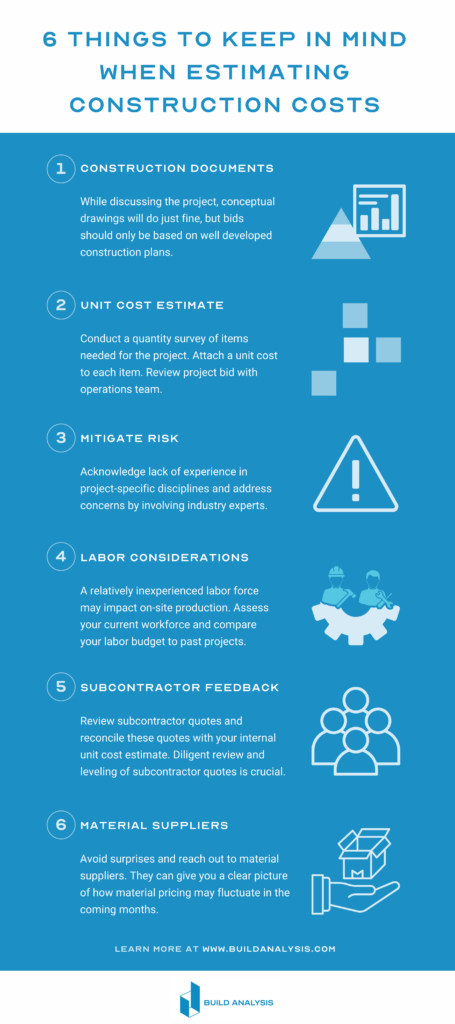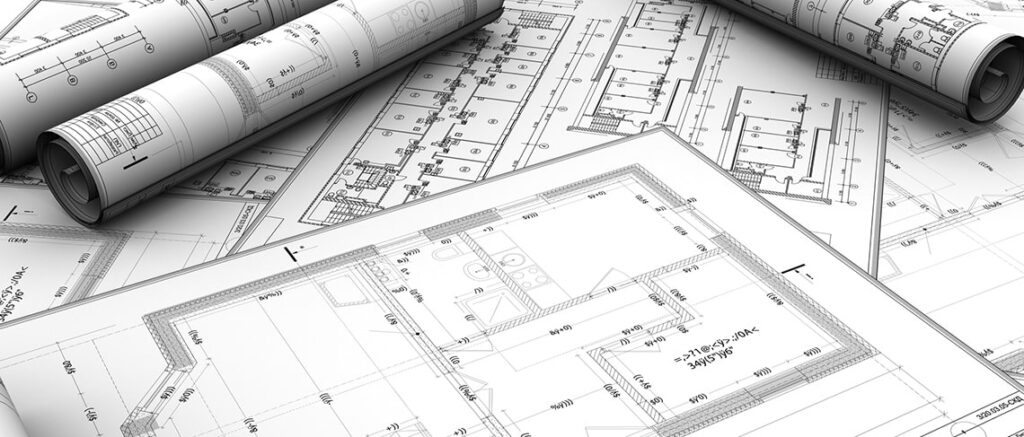The construction sector is one of the largest industries in the US and estimating construction costs is crucial for success. However, it is highly susceptible to economic conditions. After years of steady growth, the US construction industry is expected to contract by 6.5% and 2.0% in 2020 and 2021, respectively. This is due to the COVID-19 pandemic.
Throughout the pandemic, construction activities have been allowed to continue in most parts of the country. However, other factors, such as reduced economic activities, affected supply chains, and social distancing requirements, have come into play.
As things begin to look up and more projects resume, one crucial aspect of construction has become even more important: estimating construction costs. For general contractors, it can make or break your business. No two construction projects, regardless of the similarities, will have identical costs – and with the present conditions, getting an accurate cost estimate is vital.
If you overestimate, you may be competitively outbid by other contractors and not be awarded a construction project. On the other hand, underestimating can result in a shortage of funds before project completion. Fortunately, there are some tried and tested methods of ensuring your construction cost estimates are accurate.

1. Plans Should be Detailed and Precise from the Onset
One of the biggest mistakes you can make is bidding for a project you are not clear about. Before submitting any bid, make sure that there are actual plans for the project. While discussing the project, conceptual drawings will do just fine, but bids should only be based on well-developed construction plans.
Every facet of the projects should be clearly outlined, and your client should sign off on them. Such measures aim to protect your client’s interests, yourself from expensive do-overs, and the project from unnecessary delays.
2. Unit Cost Method of Estimating Construction Costs
Due to postponements and delays, some projects are behind schedule. If a project is still in the bidding phase, clients (owners) may want it to kick off as soon as possible. If so, you need a method of estimating costs that is relatively quick and does not sacrifice accuracy, such as unit cost estimating.
The steps involved in unit cost estimating are as follows:
- Perform a quantity survey of all the items needed for the project
- Attach a unit cost to each item
- Total your figures and have them challenged by another party such as a project manager
Due to disruptions in the supply chain driven by COVID-19, prices of raw materials are fluctuating more than usual and with manufacturers still not operating at full capacity, there may be delays. In some instances, you may have to pay extra for deliveries to get expedited. Therefore, as you apply markups to the project’s hard costs, be sure to take this into consideration along with other premiums.
With the unit cost method of estimating, you will be able to submit your quote in a timely manner while reducing the chances of losing out on a project that needs to commence urgently.

3. Always Mitigate Your Lack of Expertise
Expertise and familiarity play a crucial role in creating accurate construction cost estimates. If there are scope items that need to be included in the estimates that you do not have much experience with, get someone with the necessary insight. This could be a consultant such as Build Analysis.
4. Be Careful When Estimating Labor Costs
Construction workers are usually paid an hourly rate. However, calculating labor costs is not as straightforward as figuring out the number of laborers and the project’s duration. Other factors, such as their experience, come into play. A relatively inexperienced labor force may spend more hours on the project.
Factor in the costs of hiring subcontractors, craftsmen, and specialty labor. Breakdown all your labor costs and compare them with others from similar projects. This will give you an idea of your estimate’s accuracy.
5. Make Sure Estimates from Subcontractors are Accurate
It is very likely that subcontractors are involved in your project, and it is just as important for them to have accurate estimates. Even though the costs of miscalculations will mostly fall on them, it puts the overall project at risk and may hinder a general contractor’s reputation. Therefore, to ensure that their estimates are accurate, review their quotes and reconcile those quotes with your internal unit cost estimates.
When hiring subcontractors, be cautious of low quotes as they may end up being more expensive in the long run. Diligent review and leveling of subcontractor quotes are crucial.
6. Involve Your Material Suppliers
With the current market conditions, there is a considerable chance that the prices of raw materials may change significantly between the time you prepare the estimate and the time of purchase. This can have a significant effect on the project, especially if it is a larger project that runs several years.
To avoid such surprises, reach out to your suppliers as you prepare the cost estimate. They can give you a clear picture of how prices may be in the coming months, information that can help you save thousands of dollars.

Allow Build Analysis to Step In
There are many elements that come into play during construction. Make sure that you include everything and address all the minor details. This will reduce the likelihood of cost overruns. Build Analysis has built a team of cost experts and construction managers specializing in real estate development. Our team provides pre-construction analytics and construction management services with data that you and your team can depend on.